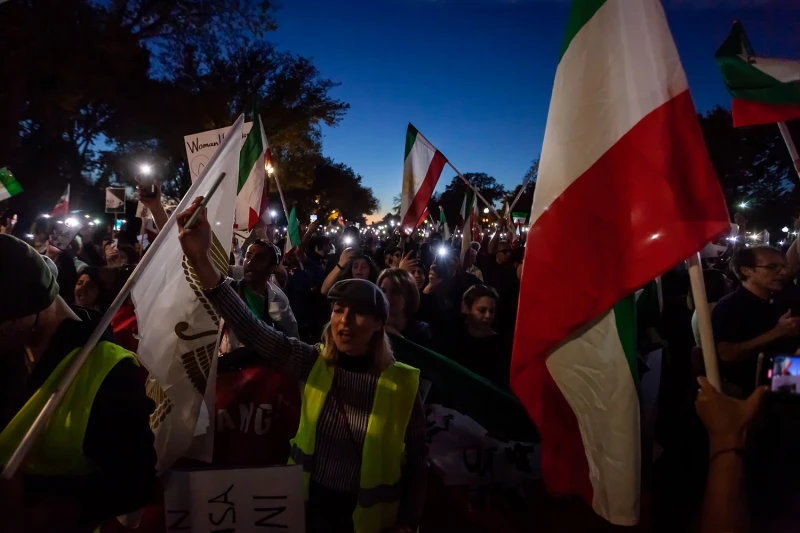Islamic Regime in Iran Suffering from Unrest
Protestors wave the flag of the old Iranian Republic calling for an end to the current dictatorship.
October 27, 2022
In January of 1978, Iran suffered a revolution that toppled the ruling government and changed the entire structure of the nation. Discontent with the shah’s rule, deep social injustice and motivations rooted in the Islamic religion were the underlying causes for this revolution, and revolt against the former Pahlavi dynasty. In the place of prior monarchy, a theocratic republic founded upon Islamic ideals rose, with a single supreme leader at the helm of the nation.
This revolution and the nation it birthed shocked the wider world. It was believed by most political observers and nations that the shahdom of Iran would not be so easily deposed. It had entrenched itself within the nation, and it seemingly had a firm and strong structure. Its deposition made for great change within the middle east. The Ba’athist state of Iraq would seek war with the nation, resulting in the Iran-Iraq war. But the new state became firmly entrenched in Iran, and it was believed that it would be entirely secure as well. That is, until very recent events.
Deriving from protests following the death of a woman named “Masha Amini,” the nation has descended into mass unrest. The reason for the death of a woman was her poorly wearing her hijab, resulting in her being beaten by the islamic government force known as “the morality police.” Following her entering a coma and her subsequent death, people all across Iran began to protest in large numbers, calling for retribution against the Islamic dictatorship.
The Islamic regime in response has deployed large amounts of security forces, loyal to the regime in its entirety. The morality police themselves have ramped up the crackdowns on breaking of the state-enforced dress code based on Islamic theology and religion, suppressing protests as well as they can. From what limited reports that can be gathered from the nation, 266 souls have already perished, and that is the minimum number, while thousands of injuries have been reported. Indeed, the totalitarian nature of the so-called “republic” is being put on full display much like it was many years ago in a different wave of protest. Notably, a teenage protestor named “Abolfazi Adinezdah” was killed by the security forces.
Foreign response has been mute outside of the sphere of NATO. Both China and Russia, nations that gather much oil from Iran have denied commenting on the situation, but it can be assumed that they secretly support the Islamic regime. Within NATO however, condemnations of the Iranian government have already been issued en-masse by NATO members and NATO sphere members. The U.N has condemned the islamic regime, and has called on all democracies to do their “moral obligation” and support the resistance to the islamic regime.
With this unrest, many wonder if somehow, some way, Islamic regime will finally be deposed, and give way to a free Iranian state. Such a state would certainly change the balance of power in the middle east towards NATO and the United States, and reduce American reliance on the kingdom of Saudi Arabia, an opportunist nation that uses its vast oil amounts to play all spheres of influence and nations in the world. However, much yet remains to be seen, and one can only wonder what the future will hold.


